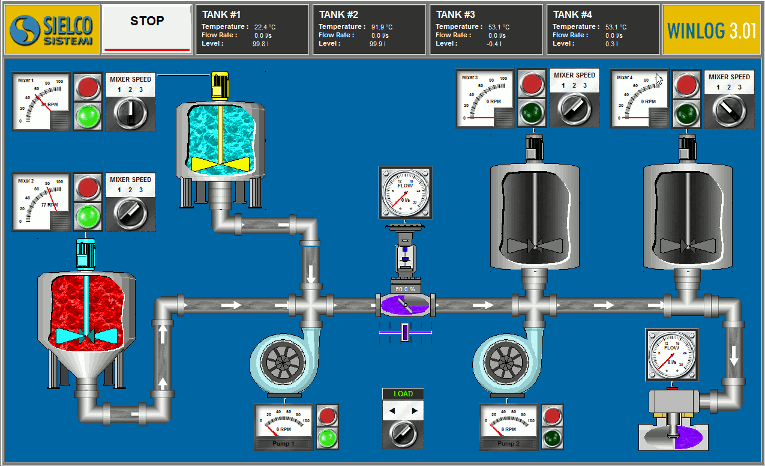SCADA Training Manual
This chapter is intended to provide a comprehensive understanding of the fundamental concepts and practical issues associated with SCADA systems. The useful has received particular attention.
aspects of SCADA systems with a view to the future. Formulae and details from specialized manufacturer manuals have been purposefully left out in favor of concepts and definitions. This chapter provides an overview of the fundamental principles and terminology used in SCADA.
It is a synopsis of the main topics that will be covered throughout the manual. SCADA (supervisory control and data acquisition) has existed for as long as control systems have existed. The first 'SCADA systems collected data using panels of meters, lights, and strip chart recorders.
The sensor-to-panel SCADA system has the following benefits:
It is simple; no CPUs, RAM, ROM, or software programming is required. The sensors are directly connected to the panel's meters, switches, and lights.
It may be simple and inexpensive to add a simple device such as a switch or indicator.
The following are the drawbacks of a direct panel-to-sensor system:
After installing hundreds of sensors, the amount of wire becomes unmanageable.
The amount and type of data are both minimal and rudimentary.
The installation of additional sensors becomes increasingly difficult as the system grows.
System reconfiguration becomes extremely difficult.
Data storage is limited and difficult to manage. There is no off-site monitoring of data or alarms.
The Contents of SCADA Training Manual:
Chapter One “Introduction to SCADA Systems”
Chapter Two “Signal Journey in SCADA Systems”
Chapter Three “Citect Configuration Environment”
Chapter Four “Managing Projects”
Chapter Five “Setting Up Communications”
Chapter Six “Graphics”
Chapter Seven “Commands and Controls”
Chapter Eight “Genies”
Chapter Nine “Popup Pages and Genies”
Chapter Ten “Alarms”
Chapter Eleven “Trends”








![FREE Irrigation autocad blocks download [DWG] | MEP Tools](https://blogger.googleusercontent.com/img/b/R29vZ2xl/AVvXsEiV-RdjuRHRfloSECetjct_jqOzVmfLzlsj4cD1PO1I24x5bgvkHljsqtbzRMVt3ZEEp_3obsS2JfAtW9s3PpKRFdM84uFpb9giOFjFnB0Swn1it4Un9HJrzme5f1KH2Kczfe7KHb-nU01Iob8kFKT8xLo3qyPsiPl8exQBh7BnqPRZksvoXsb_tVJj85Y/w72-h72-p-k-no-nu/FREE%20Irrigation%20autocad%20blocks%20download.jpg)




0 Comments